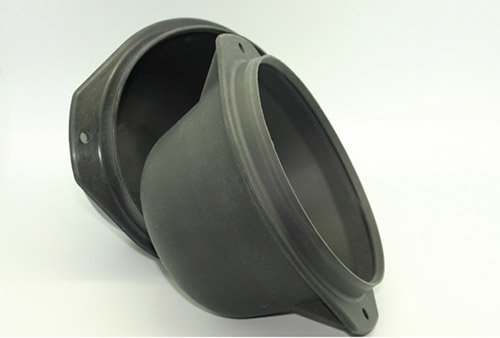
The Rubber Overmolding Process and Why It’s Used
Rubber overmolding is used in a variety of industries, including appliance, automotive, solar, and military. In rubber molding, plastic or other materials are encased in a layer of rubber molding to become a single custom part. Clark Rubber and Plastic provides this and other types of rubber processing for your needs. Here is the rubber overmolding process and why it is used:
What Is Rubber Overmolding?
Rubber overmolding is the process of pouring rubber over existing parts or into a mold to create a new item. This may include cell phone cases, toothbrushes, electronic parts, and more. After a hard substrate, like plastic or metal, has been molded to the desired shape, rubber is injected into the mold to cover the substrate. Rubber may also be poured into a mold without a substrate. We provide molding services for natural rubber, neoprene, nitrile, silicone, and more. Overmolding can also create parts with tight tolerances to make sure all elements fit together precisely.
Why Is It Used?
Rubber molding is used to improve a part’s longevity or to add cushion between parts or on tool handles. At Clark Rubber and Plastic, we offer consultations to determine your project goals and recommend the best molding process. Here are some reasons we may recommend overmolding:
Improved Grip
Rubber provides a natural grip when applied to items. The handles of tools like screwdrivers, wrenches, and hammers are often coated in rubber to offer additional grip or prevent the tools from slipping out of your hand during use. The medical industry also uses this process for tools like syringes, catheters, and dilators to reduce injury during surgery. Car part manufacturers also use this type of molding to protect parts from damage.
Shock and Sound Absorption
Overmolding helps absorb shock, which is beneficial in motor vehicles. During a collision, rubber helps absorb the impact, reducing the damage to your car. Stereos can also be protected from shock and sound damage by using overmolding on their components. We provide a variety of rubber moldings to protect your inventory from damage. Rubber mats can be added to workshops or other facilities to reduce noise and floor damage from vibrating machinery.
Improved Durability
Overmolding helps make items more durable. Applying rubber over the substrate helps preserve the tool’s base components, prolonging its life. Rubber can stretch and move, helping prevent breakage when heavy items are dropped or are in constant motion. For better protection, use rubber molding on parts that are frequently used and impacted.
Waterproofing Seal
Use overmolding where parts join to create a waterproof seal. Rubber is vulcanized with oxides and sulfur, so it is denser, and water rolls off. This is ideal for motorized vehicles, pumps, roofs, and other applications. Shoes use rubber to keep feet dry and protect them from impact with each step. Many rubbers are also resistant to gas and steam, helping to contain liquids within product parts like piping or storage tanks.
Rubber Molding for Your Business
Rubber molding and overmolding can help your business protect the key components and tools for your equipment and manufacturing projects. They provide shock and sound absorption, waterproofing, and gripping qualities that help enhance the durability of your items. The molding facilities at Clark Rubber and Plastic use advanced equipment to deliver high-quality products in low—or high-production quantities according to your deadlines. We also offer printing, assembly, packaging, and kitting services so your product is ready for use or shipping. Contact us today, and we can help you create the parts and molds you need.
